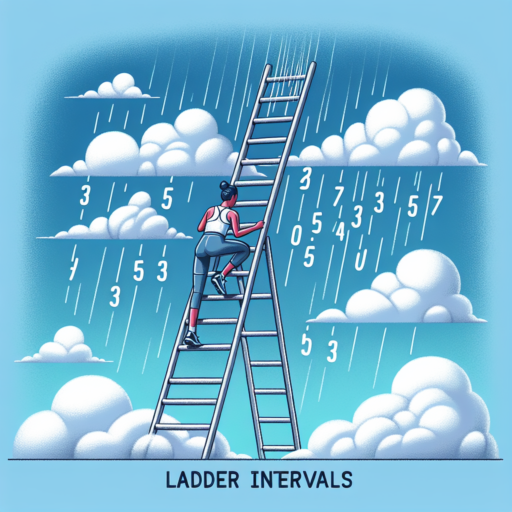Are chest straps accurate for heart rate monitors?
When it comes to monitoring heart rate, many fitness enthusiasts and professionals alike turn to chest straps for their perceived precision and reliability. These devices, worn snugly around the chest, measure electrical signals generated by the heart’s activity, offering real-time data that is essential for tailoring workouts and tracking cardiovascular health. But how accurate are these chest straps compared to other types of heart rate monitors?
Studies have shown that chest straps are generally very accurate when it comes to measuring heart rate, often considered the gold standard among heart rate sensors. This is due in part to their proximity to the heart and the method of measurement, which is directly aligned with the heart’s electrical impulses. This direct method of capturing electrical signals reduces the margin of error compared to other devices that might rely on optical sensors, like those found in wrist-worn fitness trackers or smartwatches.
However, the accuracy of chest straps can be influenced by several factors. Proper placement and fit are crucial; a chest strap that is too loose may not pick up the heart’s electrical signals accurately, while one that is too tight can be uncomfortable and potentially restrict blood flow. Moisture is another factor that can improve conductivity and thereby the accuracy of the readings, which is why some users prefer to moisten the contact points on the strap before exercising. Despite these considerations, it’s clear that when used correctly, chest straps offer a highly reliable means of heart rate monitoring for athletes and health enthusiasts.
What does a heart rate monitor chest strap do?
A heart rate monitor chest strap is a specialized device designed to measure and transmit information about your heart rate during physical activities. Its primary function is to provide real-time data on how fast your heart is beating. This data is crucial for athletes and fitness enthusiasts looking to optimize their workouts and improve cardiovascular health. The chest strap, usually made from a comfortable, elastic material, fits snugly around your chest, ensuring that it stays in place during exercise while providing accurate heart rate data.
The mechanism behind these devices involves detecting the electrical signals your heart emits each time it beats. Sensors embedded in the fabric of the chest strap pick up these signals, then the device translates them into a heart rate reading. This reading is typically sent wirelessly to a connected device such as a smartphone, smartwatch, or a dedicated fitness tracker. This seamless integration allows users to track their heart rate in real-time, helping them to maintain their optimal heart rate zone during workouts.
Furthermore, utilizing a heart rate monitor chest strap can enhance workout effectiveness. By monitoring heart rate zones, individuals can ensure they are not overexerting themselves or, conversely, not pushing hard enough. This balance is essential for achieving specific fitness goals, whether it’s fat burning, endurance training, or maximizing cardiovascular health. Additionally, the data collected over time can provide valuable insights into one’s overall heart health and fitness progress.
No se han encontrado productos.
What is ECG chest strap?
An ECG chest strap represents a pioneering technology designed to monitor heart activity. Unlike traditional ECG machines that are often found in medical settings, requiring a stationary patient connected to multiple wires, an ECG chest strap offers both convenience and mobility. This device wraps snugly around the chest, integrating advanced sensors that are capable of capturing detailed electrical signals produced by the heart. These signals are then transformed into valuable data, depicting the heart’s condition in real-time.
The core functionality of an ECG chest strap lies in its ability to provide continuous heart rate monitoring. This feature is particularly beneficial for individuals engaged in physical activities, healthcare monitoring, or those needing regular cardiac surveillance. Through its sophisticated sensors, the strap not only tracks heart rate but also analyzes heart rate variability (HRV), offering insights into stress levels, sleep quality, and overall cardiovascular health.
Equipped with wireless technology, an ECG chest strap seamlessly connects to various devices such as smartphones, smartwatches, or dedicated fitness trackers. This connectivity enables the user to store, analyze, and even share their heart health data with healthcare professionals or fitness coaches. Furthermore, the real-time analysis provided by these straps aids in detecting any abnormalities or arrhythmias, allowing for immediate action and potentially preventing serious health issues.
What does wearing a heart monitor for 2 weeks show?
Wearing a heart monitor for two weeks can provide invaluable insights into your heart’s functioning over an extended period. This extended monitoring period is crucial for capturing heart rhythms and abnormalities that might not be present during a typical doctor’s visit or a shorter monitoring period. By continually tracking your heartbeat, doctors can identify irregularities such as arrhythmias, palpitations, or instances of tachycardia and bradycardia, which might go unnoticed in daily life or during less extended monitoring sessions.
Furthermore, a two-week heart monitor is particularly beneficial for correlating symptoms with heart activity. Patients often experience symptoms that are sporadic or difficult to reproduce on demand. Having a detailed, continuous heart rhythm record makes it easier for healthcare professionals to understand the circumstances under which irregularities occur. It could reveal patterns such as triggers related to stress, physical activity, or rest periods. This correlation between symptoms and the monitored data is critical for diagnosing underlying conditions accurately.
Additionally, the data collected from a two-week heart monitoring session can lead to personalized treatment plans. By thoroughly understanding an individual’s specific heart activity, doctors can tailor treatments that address the unique patterns of arrhythmia or other conditions. This could include adjustments in medication, lifestyle recommendations, or even consideration for more advanced treatment options such as surgery if necessary. The comprehensive nature of the data ensures that treatment plans are not just standardized but customized to each patient’s needs based on their heart’s behavior over the two weeks.




